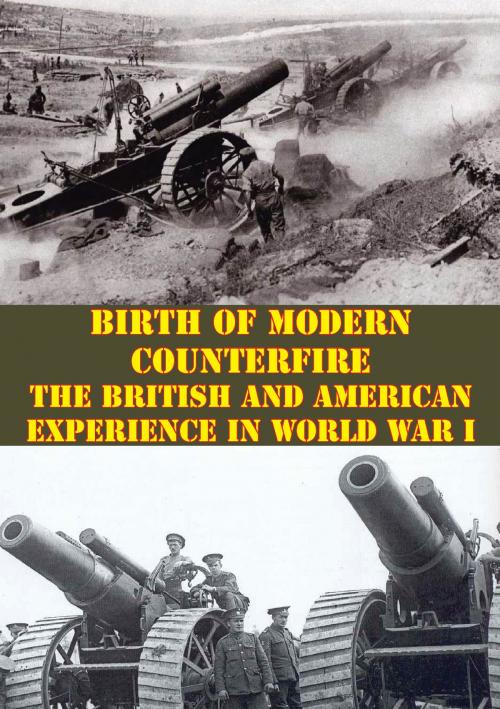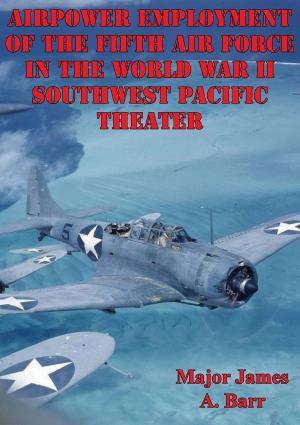Birth Of Modern Counterfire - The British And American Experience In World War I
Nonfiction, History, Military, World War I, Germany, British| Author: | Major William M. Campsey | ISBN: | 9781782897026 |
| Publisher: | Verdun Press | Publication: | August 15, 2014 |
| Imprint: | Verdun Press | Language: | English |
| Author: | Major William M. Campsey |
| ISBN: | 9781782897026 |
| Publisher: | Verdun Press |
| Publication: | August 15, 2014 |
| Imprint: | Verdun Press |
| Language: | English |
This study investigates the original needs for and development of counterfire techniques in World War I. Concentrating on the experiences of the British and the Americans, the examination explores techniques of counterfire and their failures or successes.
The first chapter investigates why World War I was the first war in which modern counterfire techniques were employed. Chapter 2 describes the British experience. Chapters 3 & 4 explain how the Americans trained for and fought in the war. The last chapter analyses those techniques and principles of action that had relevance for both nations.
The study concludes that several techniques were necessary in World War I to suppress enemy artillery. First, efforts to destroy enemy artillery before battles were not as successful as efforts to neutralize it for the duration of the battle. Second, with the enormity of details necessary to collect intelligence, assign targets, preposition ammunition, and execute the program of fire, competent staff work became critical. Third, the intelligence procedures developed in position warfare were insufficient to suppress enemy artillery as the battle line moved progressively forward. Suppression of all terrain in the zone of operations that was capable of holding enemy artillery became necessary. Finally, artillery organization and control must be centralized.
The study also identifies two techniques necessary to exploit successful counterfire. First, surprise over the enemy would invariably gain the initiative. The enemy guns would not recover from the surprise for the duration of time that neutralization fires continued. Second, counterfire must be integrated into the overall fireplan and the infantry scheme of maneuver. It did the commander no good if counterfire was successful only to fail to exploit that success with maneuver.
This study investigates the original needs for and development of counterfire techniques in World War I. Concentrating on the experiences of the British and the Americans, the examination explores techniques of counterfire and their failures or successes.
The first chapter investigates why World War I was the first war in which modern counterfire techniques were employed. Chapter 2 describes the British experience. Chapters 3 & 4 explain how the Americans trained for and fought in the war. The last chapter analyses those techniques and principles of action that had relevance for both nations.
The study concludes that several techniques were necessary in World War I to suppress enemy artillery. First, efforts to destroy enemy artillery before battles were not as successful as efforts to neutralize it for the duration of the battle. Second, with the enormity of details necessary to collect intelligence, assign targets, preposition ammunition, and execute the program of fire, competent staff work became critical. Third, the intelligence procedures developed in position warfare were insufficient to suppress enemy artillery as the battle line moved progressively forward. Suppression of all terrain in the zone of operations that was capable of holding enemy artillery became necessary. Finally, artillery organization and control must be centralized.
The study also identifies two techniques necessary to exploit successful counterfire. First, surprise over the enemy would invariably gain the initiative. The enemy guns would not recover from the surprise for the duration of time that neutralization fires continued. Second, counterfire must be integrated into the overall fireplan and the infantry scheme of maneuver. It did the commander no good if counterfire was successful only to fail to exploit that success with maneuver.







![Cover of the book Tanks In The Great War, 1914-1918 [Illustrated Edition] by Major William M. Campsey](https://www.kuoky.com/images/2014/august/300x300/9781782899167-ojbB_300x.jpg)
![Cover of the book Marines In World War II - The Seizure Of Tinian [Illustrated Edition] by Major William M. Campsey](https://www.kuoky.com/images/2014/august/300x300/9781782892885-afGw_300x.jpg)





![Cover of the book From Gallipoli To Baghdad [Illustrated Edition] by Major William M. Campsey](https://www.kuoky.com/images/2014/august/300x300/9781782895541-9iCj_300x.jpg)
